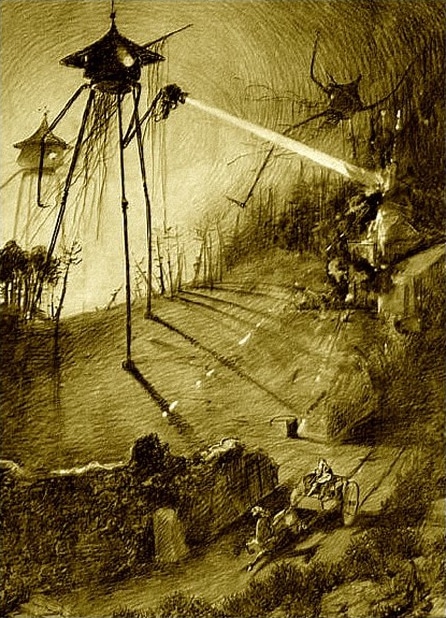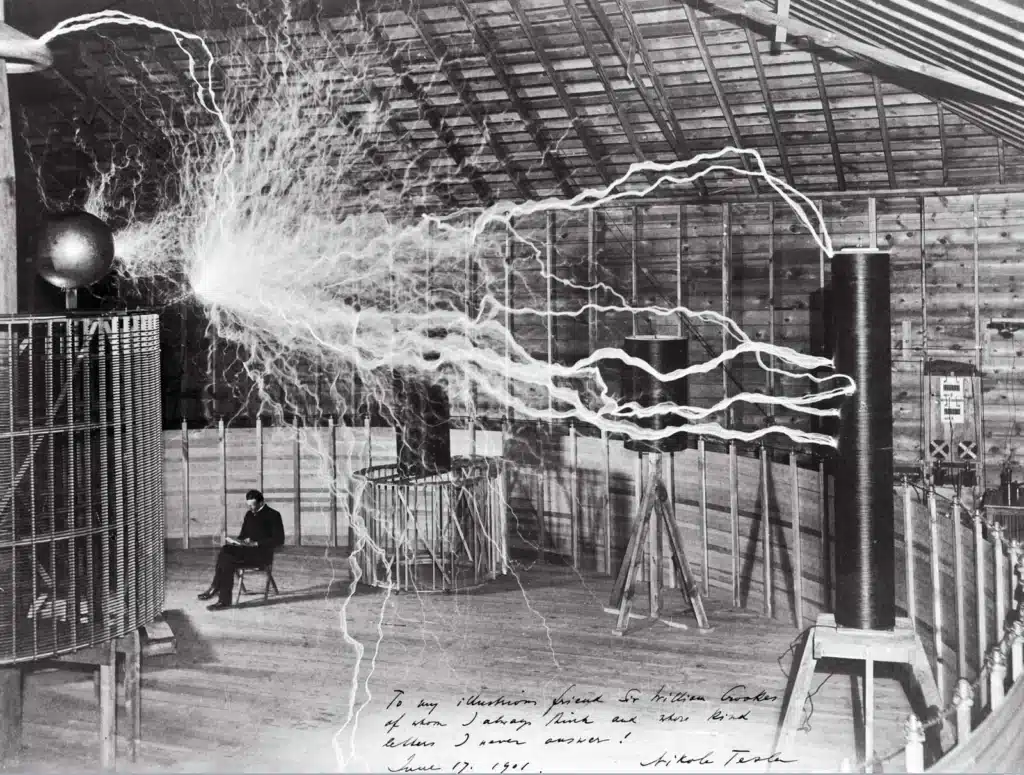Nikola Tesla may not have gained the wealth and recognition of Thomas Edison, but his work on alternating current technology has earned him a spot among America’s most renowned inventors.
Near the end of his life, he began working on a project that came to be known as the “death ray.” He claimed it was a powerful weapon that would end all wars.
What was Nikola Tesla’s mysterious death ray? And did it exist?
Why Did Nikola Tesla Want a Death Ray?
As far back as 1898, when H.G. Wells mentioned a deadly heat ray in one of his stories, people were fascinated by the idea of using lasers as weapons.
Nikola Tesla believed that a laser that was powerful enough to shoot down planes, kill thousands of soldiers at once, and travel hundreds of miles through the air would deter any future conflict. He hoped it would turn war into a “mere spectacle of machines.”

If that sounds crazy, think about what the world experienced during the tumultuous years of World War I.
The war was fought on a previously unknown scale, leaving up to 8 million dead and millions more wounded.
By the 1920s and 1930s, the memory of that war led many people to begin placing their hope in a brand-new weapon that could eliminate the need for bloody battlefield combat.
In July 1934, Nikola Tesla announced in the New York Times that his ultra-powerful death beam “would make every nation safe against any attack by a would-be invader.” It was a lofty promise.
But how would it work?
As it turns out, that question was not so easy to answer.

How Did Nikola Tesla’s Death Ray Really Work?
According to Nikola Tesla, the death ray (or “peace beam” as he preferred to call it) could shoot ions at up to 270,000 miles per hour.
These ions would create “such tremendous energy that they will bring down a fleet of 10,000 enemy airplanes at a distance of 250 miles…”
The sheer power of this unprecedented device would act as a kind of shield or an “invisible Chinese wall” for every nation.
But how? He could pump high-velocity air into a vacuum chamber by using his Tesla turbine, another invention that used discs rather than blades to generate power.
By keeping one end of the chamber open to the atmosphere, the gun could harness the energy necessary to produce the promised effects.
As impressive as that all sounds, Nikola Tesla never produced a prototype. He himself once admitted that he was “at a loss to see how to carry it out.” Still, that didn’t stop the aging inventor from touting its potential to the public for decades.
As a second world war became ever more likely at the end of the 1930s, Tesla promoted his theoretical invention as the “solution of the most pressing problem of humanity…that of ensuring peace.”
He went to multiple governments to make his case but had trouble receiving funding for an invention that was little more than an idea. Finally, the Soviet government did provide him with $25,000 in 1939, but the project ultimately fizzled out.
Nikola Tesla died in 1943 at 86, having never demonstrated his death ray to the world.
That might have been the end of his fantastical invention, but a paranoiac arms race between the world’s two superpowers in the decades after World War II would soon bring Tesla’s dream back into the picture.
The Death Ray in Modern Times
Even though Nikola Tesla had failed to prove the viability of his death ray, his reputation as an inventor was such that his ideas still held appeal – no matter how far-fetched they sounded.
United States government officials remained marginally interested in the death ray, even carrying out a secret operation called “Project Nick” to test out its feasibility.
But ultimately, it was fear of falling behind that really stirred up interest in the death ray.
In 1952, American officials were taken by surprise when Nikola Tesla’s nephew sent his uncle’s scientific papers to a museum in Belgrade.
Belgrade was then part of communist Yugoslavia, meaning that if there was any truth to Tesla’s ultra-powerful weapon, the Soviets would likely be one step ahead.
Throughout the next two decades, the Soviet government released vague updates concerning the development of Tesla’s superweapon.
Kruschev himself once announced that “a new and fantastic weapon was in the hatching stage.” That convinced the US government that it was time to really take the death ray seriously.
Still, little was done until the Reagan presidency. Reagan launched the Strategic Defense Initiative, nicknamed “Star Wars,” which was to be a system of satellites equipped with laser beams that could shoot down incoming missiles before they reached the United States.
However, despite the hype and the hundreds of billions of dollars that have been poured into the program over the past decades, nothing has ultimately come of Star Wars.
But that hasn’t prevented the dream from living on. Under President Trump, laser beams once again became a priority issue.
His administration announced that they would be investing over a hundred million dollars in “directed energy technology” and “particle beams.”
So far, Nikola Tesla’s death ray has seemed more like an old man’s delusion than a practical invention. But some still hold out hope that the legendary inventor’s “peace beam” will one day come into being.
For those believers, they point to one curious fact: When Nikola Tesla’s nephew arrived at his uncle’s hotel room after his death in 1943, he found that many of his papers already appeared to be missing, including a black notebook that was several hundred pages long.
Perhaps whoever possesses those documents holds the key to Tesla’s death ray.
Or perhaps it was all a big joke. Two days after the death of Nikola Tesla, the Office of Alien Property sent physicist John Trump (Donald J. Trump’s uncle) to his hotel room to examine his papers.
There among the inventor’s things, he found a package wrapped in brown paper. The package came with a note written in Nikola Tesla’s handwriting, and it said two things – that it contained a prototype worth $10,000 and that it would detonate if opened incorrectly.
Despite the warning, Trump carefully tore away the brown packaging bracing himself for the explosion that could occur at any moment.
When he opened the package, he was relieved to find that it only contained a Wheatstone Bridge, a simple device that measures electrical resistance. The physicist no doubt laughed with relief. Somewhere, Nikola Tesla was probably laughing along with him.

